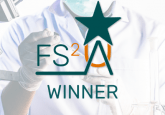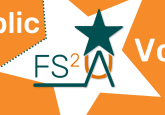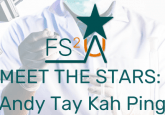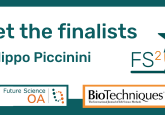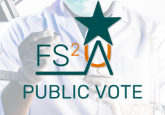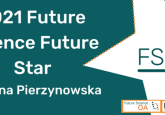Future Science Future Star finalist: Karolina Pierzynowska

This year’s stars for the Future Science Future Star Award have been narrowed down to four outstanding finalists. Karolina Pierzynowska from the University of Gdansk (Poland), works in the field of molecular and cellular neurobiology.
Here Karolina discusses her career, as well as her aspirations for the future.
Please tell us about your career to date
I graduated from the University of Gdansk, receiving a BSc degree in Biology, in 2013. I received an MSc degree at the same institution in 2015, followed by my PhD studies under the supervision of Grzegorz Wegrzyn, at the Department of Molecular Biology. I defended my PhD thesis in 2019. My thesis was recognized as one of the best by the Council of Biological Sciences of the university. In 2019, I also conducted an internship at the Department of Biochemistry and Neuroscience, Rockefeller Neuroscience Institute, West Virginia University (WV, USA), in the laboratory of Gregory W Konat. Currently, I am employed as an Assistant Professor in the Department of Molecular Biology, University of Gdansk.
What made you choose a career in your field?
I have been fascinated by biology since my childhood, so studying biology was my first choice after finishing secondary school. For my BSc thesis, I was working on bacteriophage biology. However, I switched to eukaryotic cell biology during my MSc studies. Molecular and cellular neurobiology has become my passion since I joined the research team led by Węgrzyn.
The rationale of my PhD thesis was based on a novel therapy (gene expression-targeted isoflavone therapy, GET IT), developed in 2006 by Wegrzyn, as the first method for treatment of mucopolysaccharidosis type III (Sanfilippo disease). Detailed studies on genistein – an isoflavone – indicated that this compound inhibits the synthesis of glycosaminoglycans, which are otherwise stored in the cells of patients due to defects in their degradation. Further transcriptomic analyses (published in 2014) demonstrated that this isoflavone stimulates expression of the gene coding for transcription factor EB (TFEB).
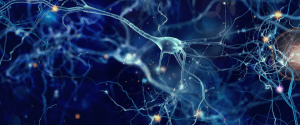
Taking out the trash: the journey of an extraordinary, experimental Alzheimer’s drug
The importance of a cell-clearing mechanism in Alzheimer’s has been exposed and utilized to design an experimental therapeutic for the disease.
I came to this thesis as a continuation of my MSc studies, where I focused on the regulation of autophagy. I was interested in the putative use of this process in therapies for central nervous system (CNS) disorders. Many of them are caused by the aggregation of pathological proteins, which disturb the function of neurons, leading to severe symptoms. Therefore, a molecule that is both an effective autophagy inductor and a safe compound, which could be used in long-term therapy (a feature absent in vast majority of known autophagy inductors), is highly desirable. I hypothesized that since genistein stimulates TFEB, it should also induce autophagy. Knowing that this isoflavone has been demonstrated (in clinical trials) to be safe for patients and to cross the blood–brain barrier, we asked if genistein can be a potential candidate for the treatment of neurodegenerative diseases caused by protein accumulation.
Therefore, the aim of my PhD thesis was to test the effects of genistein in two neurodegenerative diseases, Huntington’s disease (HD) and Alzheimer’s disease (AD), at both molecular (including determination of molecular mechanisms) and organismal (biochemical and behavioral studies) levels. This is what led me to my work in this field. Now, I am involved in studies on molecular mechanisms of neurodegenerative diseases, from mucopolysaccharidoses, through HD to AD, and on the development of novel therapies for them. Apart from my work in a research team, I am now conducting my own projects and grants as a principal investigator.
What are the main highlights of your research career so far?
I have started my studies on the development of a new therapy for neurodegenerative diseases from experiments on the cellular model of HD. Using immunodetection techniques, I demonstrated the high efficiency of genistein in the degradation of both soluble and aggregated forms of mutated huntingtin (the protein causing HD) in a simulation. This led to improved viability of HD cells, as demonstrated in MTT and annexin V tests. I have subsequently proven that genistein-induced autophagy is responsible for the above-mentioned effects. These results have been used in patent applications (both national and international) on the use of genistein in HD therapy. These studies were also described in an article published in Neuromolecular Medicine.
Having such promising results, I have initiated studies on the use of genistein – at the high dose, 150 mg/kg/day, used previously in works on Sanfilippo disease, proven to act and to be safe in vivo – in the most common neurodegenerative disease, AD. I have used a streptozotocin-induced rat model, which is considered the best model of the sporadic form of AD (occurring in over 70% of human cases). In this model, aggregates of β-amyloid (BA) and hyperphosphorylated tau protein (p-tau) appear as in the human disease, and the symptoms highly resemble those occurring in AD.
Behavioral studies, which measured motoric activity (actometer tests), fear level (open field test, elevated plus maze), and memory (Morris water maze) clearly indicated that genistein completely corrected the behavior of AD animals. No adverse effects could be observed in genistein-treated animals. Molecular analyses (performed with Western-blot, dot-blot, and immunohistochemical methods) demonstrated an increased level of autophagy markers and a significant reduction in levels of both toxic β-amyloid and p-tau in the CNS. The vital role of autophagy in this reduction has been shown in in vitro experiments. On the basis of these results, a patent application has been prepared, and the patent has been granted. Importantly, one of the biggest pharmaceutical companies, Pfizer, expressed an interest in this method, and negotiations on the possible commercialization of my results are being conducted. My results have been published in the journal Neuropharmacology.
Apart from patent applications and scientific publications, my results were presented during several international conferences and I have obtained awards for best presentations at six of them. Nevertheless, I was aware that the results of my in vitro studies on the effects of genistein on the HD cellular model did not fully illustrate all processes occurring in the organism. Therefore, I have submitted a grant proposal for studies on an animal model of HD. Such a grant has been awarded from the National Science Center (Kraków, Poland), for which I am a principal investigator. Therefore, I am now conducting my studies on the effects of genistein in the mouse model (R6/1 line) of HD, which should demonstrate the efficacy of this isoflavone in animals. Both behavioral and molecular studies are being performed in this project.
I am also involved in studies on molecular and cellular mechanisms of mucopolysaccharidoses. My experiments indicated that the expression of hundreds of genes is changed in these diseases as secondary effects of glycosaminoglycan storage, which influence a battery of cellular processes and functions of organelles. Interestingly, genistein can also be beneficial in these diseases by reducing both primary and secondary causes of these disorders. I have published several papers in this field, including those in which I was a corresponding author. Altogether, my publication record consists of 30 articles in recognized, international scientific journals.
In summary, my results indicated that genistein is the first safe compound that is able to remove the main biochemical causes of both HD and AD due to the induction of autophagy. Moreover, genistein can reduce primary and secondary storage in mucopolysaccharidoses. Therefore, I suggest that this isoflavone can also be considered as a potential therapeutic for other neurodegenerative diseases that arise due to the accumulation of toxic macromolecules. This might be of particular interest as one molecule could be used for the treatment of many rare diseases for which no cure is currently available.
What is the most difficult challenge you have encountered in your work and how did you overcome it?
Despite many years of studies on AD, no effective treatment is available now. This indicates that finding a drug that might prevent or correct AD symptoms is extremely difficult. I suppose that previous failures in the development of an efficacious therapy were due to the concentration of researchers focusing on a single cause of the disease, and β-amyloid was suggested to be such a molecule. However, it appears that there are many more causative agents of AD, including not only β-amyloid but also p-tau and other unproperly folded proteins forming aggregates. Therefore, I was looking for a method to remove various aggregates composed of different proteins.
Autophagy was known to be a process responsible for the degradation of various improper compounds in cells; however, the vast majority of autophagy stimulators may cause overactivity of this process and remove properly folded molecules, causing severe adverse effects, especially when used for a long time in patients. One must note that any drug for neurodegenerative disease must be administered for many years, thus, apart from its effectiveness, it must be safe. I have overcome this problem by finding that genistein is a gentle, but effective stimulator of autophagy, which has been found to be safe in studies with animals and in clinical experiments, even at high doses. The efficient activation of autophagy (while not overstimulating this process) using this molecule, encourages a significant reduction in the storage of various molecules and results in an improvement in the various functions of the animal models, even correcting their behavior.
Which publication of yours best highlights your career to date?
This paper presents the results of my studies on the development of the novel therapy for AD, based on genistein-mediated autophagy stimulation, described above as my major achievement.
What are your main aims for the future?
My main research plans for the future are focused on the exploration of my finding that the genistein-induced autophagy is not restricted to degradation of a specific molecule, but causes the reduction of the various pathological macromolecules that accumulate in cells. This can be exemplified by mutant huntingtin (in HD), β-amyloid and p-tau proteins (in AD), as demonstrated in my studies, or glycosaminoglycans (in mucopolysaccharidoses), as shown in previous studies led by Wegrzyn. Therefore, I theorize that genistein can lead to the removal of pathogenic macromolecules accumulated in different diseases.
In the light of this hypothesis, I would like to test the effects of this isoflavone in other neurodegenerative diseases. I plan to test rare diseases, particularly those where the number of patients worldwide is estimated at 5,000 or less. When considering therapies for each rare disease, an economic barrier appears, as the development of potential drugs for such diseases is extremely risky for a pharmaceutical company. On the other hand, there are hundreds of such diseases, and millions of patients suffer from a lack of any treatment. I will test if either genistein or other autophagy inducers (like capsaicin, resveratrol and others) can be used as drugs for a large group of rare diseases caused by the accumulation of macromolecular aggregates. This would dramatically increase the number of potential patients that could be treated with a single compound; such a drug would be much more attractive for pharmaceutical companies.
I plan to test diseases in which the molecular mechanisms are different but depend on the accumulation of pathogenic macromolecules. Cellular and/or animal models of these diseases will be used. If the results of such studies indicate that either genistein or another compound can correct both causes and symptoms of such different diseases, one might speculate that the induction of autophagy by a safe stimulator might be considered as a universal therapy for a large group of rare diseases. This might be a breakthrough in the treatment of millions of patients suffering from as yet incurable disorders.
Where do you hope to see yourself in 5 years?
I see myself as a scientist, working at a university, leading my own research group. Since I have demonstrated creativity, effectiveness in my work and dedication to research, I hope my achievements will be recognized and I will be able to obtain further academic positions. My professional aim in 5 years is to become a leader of my own research group and conduct top-quality research in the field of molecular and cellular neurobiology, to discover unknown mechanisms and novel therapeutic options for neurodegenerative diseases that might help millions of people suffering from, currently untreatable, severe diseases.
Why do you feel you deserve this award?
I am a young researcher dedicated to science and who has demonstrated creativity, independent thinking and the ability to find unconventional solutions to long-lasting, previously unsolved problems. The method I developed is effective in the treatment of Huntington’s disease and Alzheimer’s disease in cellular and animal models, thus, if it is proved also in clinical studies, it might be a breakthrough therapy for various neurodegenerative diseases. This award would be a further motivation for my intensive work on the molecular mechanisms of neurodegenerative diseases and the development of novel therapies.
Vote for Karolina Pierzynowska for the Future Star Award here
